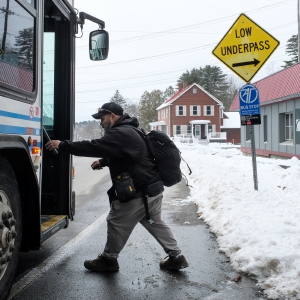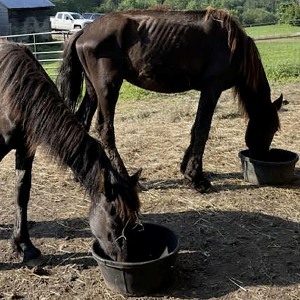Vermont’s walk-in COVID vaccine clinics to close by end of month
| Published: 01-04-2023 10:53 PM |
The state Department of Health plans to end walk-in COVID-19 and flu vaccine clinics by Jan. 31.
The clinics have given out between 500,000 and 1 million COVID vaccine doses over the course of the pandemic, through multiple rounds of campaigns for different age groups and boosters, according to health department data.
But in an announcement on the health department website last month, officials said there hasn’t been enough attendance in recent months to keep clinics going during the most recent iteration of the vaccine, the bivalent booster dose, which targets the omicron variant.
“Demand is starting to peter off. We gave out about 20,000 doses of vaccine in the month of December, which is real, real low,” said Monica Ogleby, immunization program chief for the health department.
Those low numbers come despite the health department expanding evening clinics right before the holidays to try to encourage more Vermonters to come out.
“Not gonna lie: I was really hopeful that that would be the case,” she said.
Ogleby said the department also believes that the state is reaching the “tail end” of the optimal time to get vaccinated, since respiratory illnesses like COVID tend to follow a seasonal pattern.
“Really, people should be getting vaccinated earlier than the end of January in order to protect themselves and their loved ones and those around them,” Oglelby said.
Article continues after...
Yesterday's Most Read Articles
The vaccine will remain available through doctor’s offices and pharmacies along with some community-run clinics, like the health equity clinic, she said. Asked if the health department would consider restarting its walk-in clinics for future vaccination campaigns, she pointed to those other options.
“We have been maintaining this infrastructure of free clinics through our EMS partners, because we’ve always known that there’s something else on the horizon coming,” she said.
If the need arose for more walk-in clinics, “we absolutely, certainly could” set up new clinics, she said. “But the ongoing coordination, effort, expense, all of those things are very real at this point, and the demand just doesn’t justify keeping it going for now.”
For Anne Sosin, a health equity researcher at Dartmouth College, the end of walk-in clinics is concerning because those clinics have filled geographic gaps in remote areas and relieved pressure on the health system, which has been “battered” by the need for COVID vaccinations and treatments, and has struggled with staffing.
She also said commercial pharmacies were an imperfect substitute for walk-in clinics. Vermont accused Walgreens pharmacies of unsafe conditions in June due to low staffing and frequent medication errors.
“Public health campaigns reliant on a fragmented private health system that is not well-distributed geographically tend to produce inequitable access and outcomes,” Sosin said via email.
At the same time, she praised the department for keeping walk-in clinics open as long as it has. Many other states shut down vaccine clinics in 2022 and did not bring them back for the bivalent booster, she said.
As of Dec. 28, about 31% of Vermonters 5 and older have received the bivalent booster, according to the health department. That’s far lower than the 80% of all Vermonters who got the primary vaccine series — but higher than the national bivalent booster rate of 15%.
Sosin said she’d hoped that older Vermonters, in particular, would have higher rates of vaccine uptake. As a new subvariant, XBB, overtakes other strains, “we really should push a little harder to close those gaps,” she said.
The new strain is unlikely to cause a surge as bad as the omicron wave that overtook the state last January, but Sosin said she would expect at least a moderate increase in hospitalizations over the next few weeks.
As of last Wednesday, COVID community levels in the state were “low,” but flu levels were “very high,” the department reported.
In addition to getting vaccinated, Sosin advised Vermonters to use tools like masking and testing strategically in the coming weeks to prevent transmission.
“We need to toe the line between extremes of carelessness and over-concern,” she said. “Now is a really good time, particularly as kids head back to school, for us to revive some of the tools” used earlier in the pandemic, such as short periods of masking in schools.
The closure of walk-in clinics also comes amid changes in the federal COVID strategy that could “commercialize” vaccinations, making it harder for uninsured Vermonters to afford COVID vaccines.
Ogleby said uninsured Vermonters should contact their local federally qualified health center, rural health center, or Planned Parenthood to get low- or no-cost vaccinations. The federal government also offers a lookup tool for vaccine providers here.
Looking back on two years of COVID vaccination campaigns, Ogleby said the biggest lesson she’d learned was the importance of building partnerships with health equity groups who “really rallied to help us work with populations that we’ve previously not served.”
In the earliest months of the pandemic, BIPOC Vermonters had a far lower vaccination rate than non-Hispanic white Vermonters, department data showed. Its data now shows that gap has narrowed or even reversed for different age groups.
Many local organizations — such as the Association for Africans in Vermont, the Vermont Language Justice Project and the Vermont Abenaki Artists Association — worked to build trust and educate marginalized communities about the vaccine, she said.
“There’s been so much work that has been way above and beyond just like ‘here, population fill-in-the-blank, we’re gonna send a crew of EMS to your location with vaccines,’ ” she said. “That’s something we eventually figured out how to do well, but we’re gonna have to keep working at it.”

 Upper Valley winter shelters kept dozens warm and dry
Upper Valley winter shelters kept dozens warm and dry Owner of Friesian horse facility ordered to pay care costs for seized animals
Owner of Friesian horse facility ordered to pay care costs for seized animals
